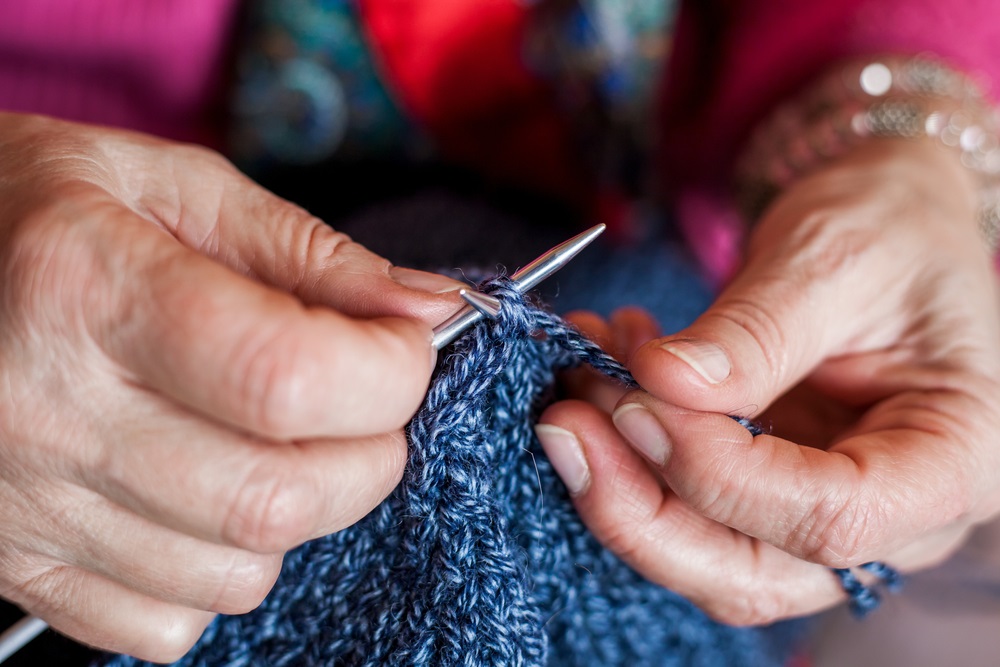
What Is Arthritis?
As with many chronic conditions, arthritis requires many changes in how you live. For most arthritis patients this means following a strict diet, exercise program and medication regimen, but it may also require more unconventional arthritis treatments like psychotherapy, acupuncture or yoga. By adopting these changes, you can vastly slow the progression of this disease and increase your quality of life.
The Centers for Disease Control and Prevention estimates that 23 percent of the adult U.S. population suffers from arthritis, but it is not always easy to define what arthritis is exactly. At its most basic, arthritis is an inflammation of the joints, but there are more than 100 types of arthritis, each with their own causation mechanisms and therapies.
The most common forms of arthritis are osteoarthritis and rheumatoid arthritis. Osteoarthritis, also known as OA, involves the erosion of joint tissue including cartilage, ligaments and bone. Osteoarthritis primarily affects middle aged to elderly people. More than 3 million Americans suffer from OA.
Rheumatoid arthritis, also known as RA, is actually an auto-immune disorder in which the immune system attacks the joints and organs. More than 200,000 new cases of RA appear in the U.S. every year. There is no cure for RA, but there are arthritis treatments that can slow the progression of the disease.
Arthritis is characterized by the following symptoms:
- Pain, usually in or near joints
- Swelling
- Stiffness
- Tenderness
- Joint deformity
- Grinding sensations
- Redness
- Fatigue
Foundational Lifestyle Changes
If you are diagnosed with one form of arthritis, then your doctor will discuss with you your options. For most types of arthritis, there is no cure, so you must try to slow the progress of the disease using an array of arthritis treatments. The sooner you start and the stricter in your adherence, the more you will slow the disease and protect your joints.
- Healthy diet—by eating a select diet of foods, you can help minimize pain symptoms and maintain joint health. Many doctors recommend fruits, vegetables and whole grains due to their anti-inflammatory properties. Fatty fish like salmon and tuna also help fight painful swelling in joints. The spice turmeric has been shown to help ease arthritis symptoms. In general, it is a good idea to eat healthy so that you maintain a low body weight; this should not only alleviate pain symptoms, but a lower body weight also relieves stress on many joints.
- Regular exercise—remaining active is essential for maintaining joint health. As with a proper diet, exercise helps keep your body weight in a healthy range, but with the right exercise program, you can keep your joints functioning optimally. When you choose a fitness routine, focus on strengthening muscles around joints, maintaining flexibility and burning calories. Discuss what exercises are best for you with your doctor or physical therapist prior to starting a new fitness program. Start off slowly and build a tolerance for exercise.
- Cut out bad habits—for most people, there are a few indulgences that they know are bad for them but they persist in using. This may include smoking, drinking or eating junk food. Once you are diagnosed with arthritis, however, you should re-examine all of your bad habits and try to quit as many as possible. For example, smoking, drinking and overeating can interfere with sleep which is crucial for pain tolerance and healing.
Beneficial Lifestyle Changes
As with any chronic health condition, there is an emotional and a psychological component to arthritis. This is because ongoing pain influences how the brain operates. Over time, the frustration and stress of the pain actually re-wire the brain, making it more sensitive to pain. Emotions like stress and fear predominate your thought processes, which in turn, make your pain more potent.
There are some proven ways to limit negative thought processes and, consequently, limit the effects of pain symptoms. These are often not simple or quick solutions; it may require months or, even, years of investment to maximize the potential outcome, but they are often worth it.
- Mindful meditation—this discipline teaches you to embrace the sensations in the moment. Over time as you practice mindfulness, you actually diminish your stress, fear and depression in response to pain. It may seem counter-intuitive to explore your feelings of pain to diminish them, but accepting your pain helps you manage it. Long-time practitioners of mindful meditation attest that they can almost completely ignore all pain symptoms.
- Yoga—similar to mindful meditation, yoga can be a very important arthritis treatment. Yoga combines stretching and balance exercises with psychological harmony, so it improves joint function as it elevates mood. Many arthritis sufferers derive enormous benefits from practicing yoga because it imparts greater control over your mind and body. Like mindful meditation, it may take a long while to derive significant benefits from yoga.
Optimizing Your Environment
There are many changes you can make outside of your mind and body that can make your life easier and more pain-free.
- Medical devices—it is uncomfortable admitting that you may need a cane or a walker, but such devices may greatly improve your ability to move around. This may not only help your mobility in the home and outside, but it may also help prevent any additional injuries that could come with additional pain symptoms.
- Adaptive equipment—many arthritis sufferers find life much easier with equipment like grabbers and dressing aids. There is no reason to endure unnecessary pain or stress stiff joints if there is a pain-free alternative.
- Electric devices—if you find yourself having difficulty performing tasks around your home with traditional tools like brooms or knives, then you may want to replace them with electric versions. You often get comparable results with less invested time and aggravation.
- Comfortable clothing—one of the biggest challenges for many arthritis patients is donning clothes. If you find it troublesome to lace up shoes or button shirts, you may want to substitute more comfortable alternatives like Velcro binders.
Article written by: Dr. Robert Moghim – CEO/Founder Colorado Pain Care
M.D. Disclaimer: The views expressed in this article are the personal views of Robert Moghim, M.D. and do not necessarily represent and are not intended to represent the views of the company or its employees. The information contained in this article does not constitute medical advice, nor does reading or accessing this information create a patient-provider relationship. Comments that you post will be shared with all visitors to this page. The comment feature is not governed by HIPAA and you should not post any of your private health information.



